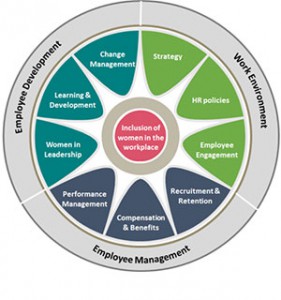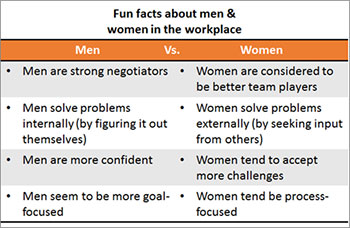“We are in a dilemma: What to do with our education? Where to work? A number of girls get their diplomas but are lost afterwards due to the lack of job opportunities for women.” – Head of a women’s welfare association in Jeddah.
This is not an uncommon sentiment in the Kingdom of Saudi Arabia (KSA) where women represent only 16% of the total workforce. The low representation of women in the workforce is not entirely surprising in a country that does not allow women to open a bank account or control their finances without the permission of their male guardian.
But not for long.
KSA has embarked on an ambitious journey to modernize the Kingdom through its Vision 2030. This vision includes the empowerment of women and the materialization of their potential through a series of endeavours that will likely bring massive changes to the way the female workforce is perceived in the region.
We can already see how the government’s efforts to provide flexibility to women has positively impacted the participation of women in the workforce. For instance, allowing women to work in a wider range of jobs has resulted in a 130% increase in the employment of women in the private sector between 2012 and 2016. While women make up only 16% of the total workforce right now, the government aims to increase this to 30% by 2030. Meeting this target could add 12% to the size of the total OECD economy by 2030. (AT. Kearney Middle East).
 What’s more? The government seems to be advocating this vision strongly through its progressive actions like lifting the ban on driving for women.
What’s more? The government seems to be advocating this vision strongly through its progressive actions like lifting the ban on driving for women.
With all these advancements, more and more women will soon enter the workplace and businesses in Saudi Arabia will find themselves asking the question: ‘Are we prepared to welcome the changes that will result from the inclusion of women in the workplace?’
We understand that the answer to this question may not be simple, therefore, PeopleFirst is taking this opportunity to present a series of three articles to help businesses explore the ways in which they can prepare themselves for the inevitable change. Each article in the series will focus on the most important aspects of business that need to be addressed and are illustrated on the right:
In part one, we will look at how the work environment of an organization may need to adapt to facilitate the inclusion of women in the workplace. Before we begin, however, it is important to note that businesses in Saudi Arabia must truly embrace the idea of inclusion of women in the workplace before they can begin to make any changes to the way they work. It takes courage to let go of the familiar and embrace the new, and if new ideas are advocated from the top management, change will be cascaded to the departmental and individual levels more seamlessly.
Strategy
 Women make up 50% of the consumer population in KSA. Wouldn’t it be great to know a woman’s perspective when it comes to making business decisions that could affect business growth?
Women make up 50% of the consumer population in KSA. Wouldn’t it be great to know a woman’s perspective when it comes to making business decisions that could affect business growth?
A critical starting point for any business that wants to include women in the workplace is to have a holistic strategy. Before they can develop a strategy, decision makers must ask themselves how including more women into their workplace will contribute to their business objectives. For instance, with women now being able to drive, there is potential for more women to purchase cars and an auto dealership may benefit from hiring female sales staff for their showroom to assist female customers.
Once the business strategy is in place, businesses may need to devise a diversity plan that will aim to drive gender balance across the organizational hierarchy. The diversity plan should provide equal opportunity to women in terms of time, space and resources across the business.
The strategy and diversity plan will then feed into all other aspects of the work environment, culture and day to day operations, opening doors for equal opportunities and gender sensitivity in the workplace.
Research suggests that companies that promote gender diversity and provide equal opportunities make a huge difference in employee satisfaction, productivity, and overall company success. So it’s no surprise that the list of companies with female leaders continues to grow. General Motors, PepsiCo, Xeroxx and IBM are just a few examples of companies with female CEOs.
HR Policies
HR policies provide a concrete foundation for businesses to operate at a strategic and operational level in a way that is legally compliant and in line with best practice. Therefore, in order to incorporate the diversity plan into the company’s day to day HR practices and develop a gender sensitive workplace, businesses will need to review and update their HR policies. Policies that promote equal opportunities, fair work practices and gender balance will certainly allow companies to be more successful in achieving their ultimate goals.
Fairygodboss (a site where women can review their employers) reports that nearly 43% of women have experienced some type of harassment in the workplace. The website highlights that the majority of workplace harassment is perpetrated by a colleague (57%), rather than a boss (36%) or manager (25%). Such practices will not be phased out of the workplace unless companies adopt strong policies and practices of reporting and punishing the perpetrators.
Needless to say, businesses will need to start thinking about developing and implementing other policies that include but are not limited to the following:
- Offering flexible working hours and adapting leave policies to facilitate women in managing work life balance
- Work ethics may need to be redefined to ensure women are treated with respect and professionalism at the workplace, and that they are able to voice any grievances with the confidence of a fair and objective resolution
- Offering competitive and equitable pay structures
- Providing women with the opportunity for training and career development
This may help businesses attract and retain female talent in support of the Kingdom’s vision.
While the company can decide which HR policies to change and when, there will be certain policies & practices that will definitely have to change before women can be introduced to the workplace. For instance, keeping in mind the religious and social obligations, unrelated men and women are expected to maintain distance and limit their interaction with each other. Which is why, as a minimum requirement of the Shariah law, companies will be expected to prepare separate work spaces for men and women. This will include the separation of at least the following:
- Work stations
- Office entrance
- Office elevators
- Lunch and prayer room
- Restrooms in the workplace
Having separate work spaces will not only meet the legal requirements but it will also provide a comfortable work environment for both men and women, allowing them to work in an environment that is perceived as familiar and culturally acceptable. Having a comfortable space to work in can also result in higher engagement levels for women as explained in the next section.
Employee Engagement
It is widely known that engaged employees are productive employees, and companies that wish to build an engaged workforce need to foster the right work environment. HR can ensure that the newly hired women as well as the existing men in the workplace are engaged and motivated by encouraging open communication, opportunities for idea-sharing, employee support / resource groups and mentorship programmes. In addition, welcoming new employees with a well-rounded induction plan can go a long way in allowing them to integrate seamlessly into the organization and helping them to eventually grow.
PeopleFirst is ideally positioned to help your organization optimize the workplace environment, improve employee engagement and refine employee development. If your aim is to position your organization to reap the benefits of inclusion of women in the workplace then get in touch with PeopleFirst today.

